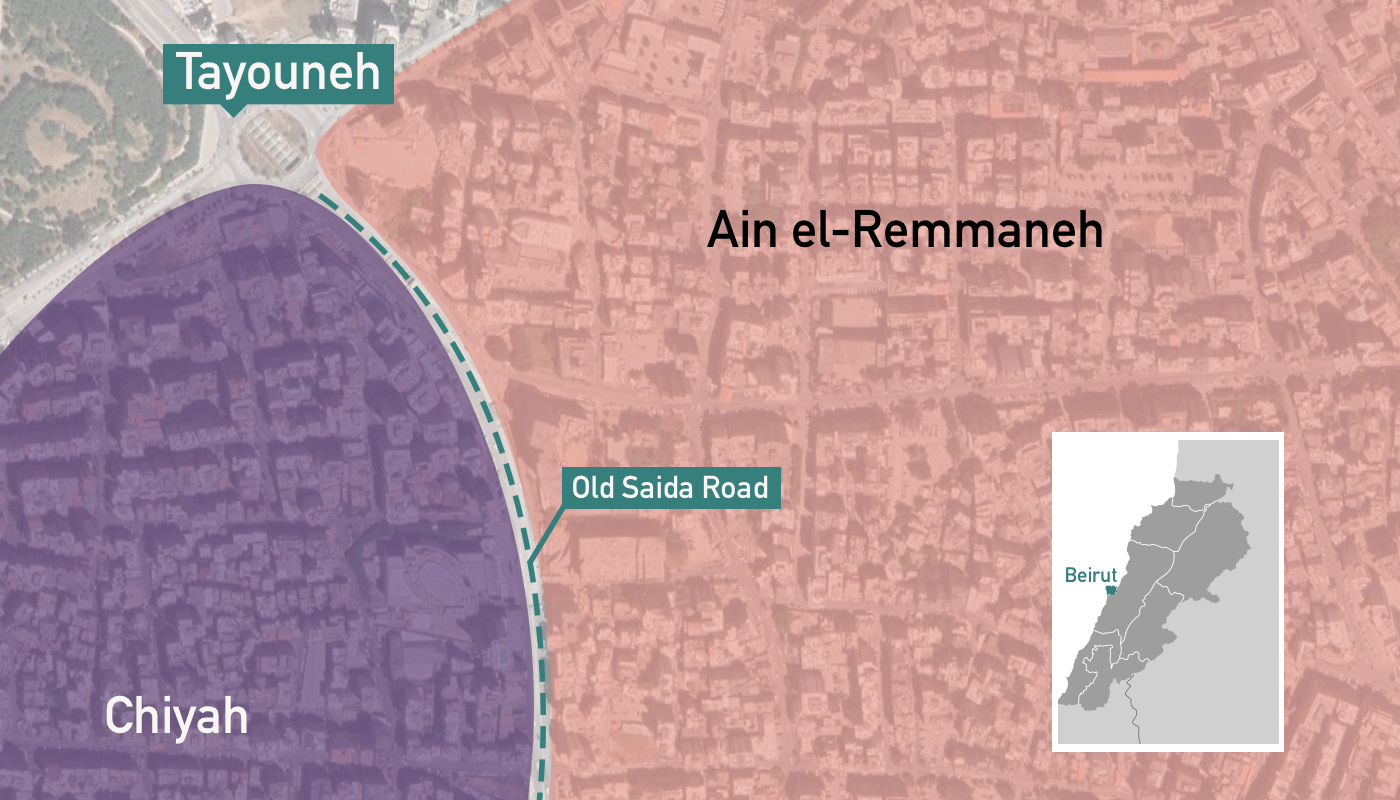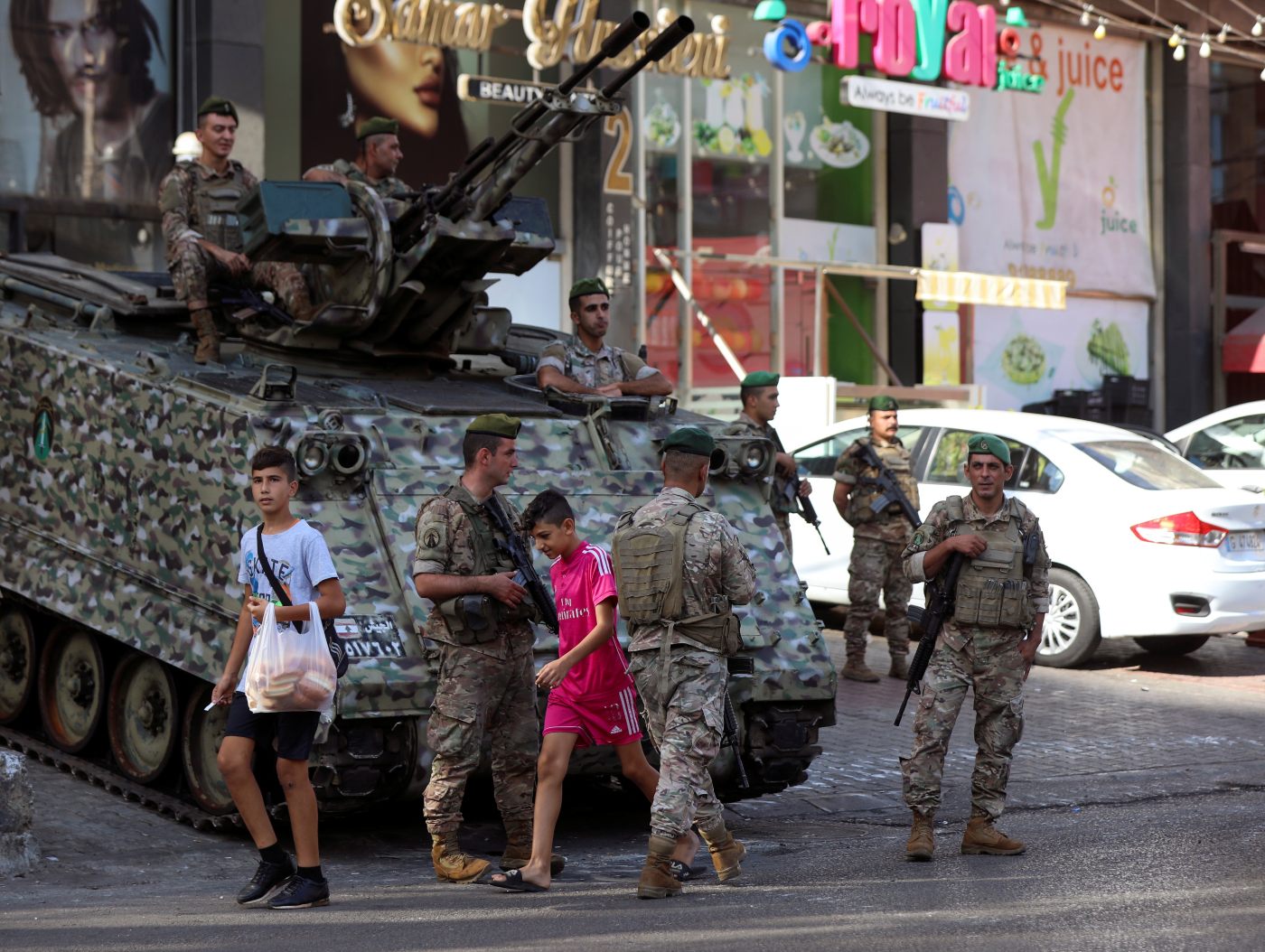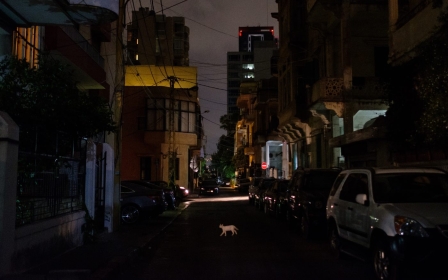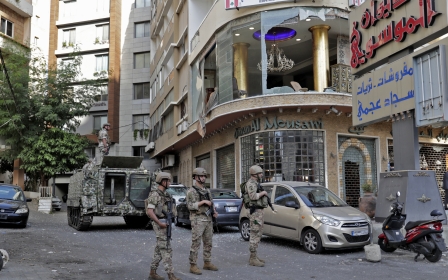Lebanon: Beirut takes stock a day after deadly gunfight leaves seven dead
A day after heavy clashes that killed seven people and left dozens wounded, the neighbourhoods of Ain el-Remmaneh and Chiyah in Lebanon’s capital, Beirut, resembled army barracks.
Army tank track marks streaked the concrete, while bullet shells littered the ground like breadcrumbs for those searching for clues of the four-hour gunfight, which took place on Thursday between supporters of the Amal and Hezbollah movements on one hand, and as-of-yet-unidentified snipers on the other.
New MEE newsletter: Jerusalem Dispatch
Sign up to get the latest insights and analysis on Israel-Palestine, alongside Turkey Unpacked and other MEE newsletters
Hundreds of Lebanese armed forces placed checkpoints on entrances leading to Ain el-Remmaneh in Tayouneh-Badaro in the wake of the clashes, while on Friday some entrances were completely blocked by barbed wire and metal barriers.
The area, widely known as the scene of the bus massacre of 13 April 1975 that kicked off the 15-year civil war, has once again awoken to fears of another deadly conflict in the beleaguered country. The invisible line that had always separated many areas in Beirut in peacetime appears to have re-emerged.
Although the fighting has ceased since Thursday afternoon, the smell of smoke and gunpowder was still in the air on Friday morning, which was declared a national day of mourning.
“The smell of death is still in the air,” one curious passerby told Middle East Eye, while another journalist at the scene noted that a nearby vacant lot was still smoking a day after the fighting. The observer's poetic remark was not so far from reality: the asphalt of Tayouneh-Badaro had been sprayed with sand to cover the blood stains.
Only a few kilometres south, gunshots were still heard in the suburbs of Beirut on Friday - this time, as part of the funerals for the Hezbollah and Amal fighters killed less than 14 hours earlier.
Amid the fragile quiet, mere hours after one of the most significant gun battles in the capital in years, uncertainty reigned, with residents anxious over what the near future might hold.
'Reason is never louder than bullets'
The Hezbollah and Amal movements have accused the Lebanese Forces (LF) party, led by Samir Geagea, of ambushing a protest heading to the Palace of Justice on Thursday morning calling for the removal of Judge Tarek Bitar from the investigation into the 4 August 2020 Beirut port explosion. The protesters accuse Bitar of “bias” for summoning for questioning several former ministers affiliated with Amal.
Residents from the Chiyah neighbourhood, a Hezbollah and Amal bastion, insist that Lebanese Forces snipers were scattered on rooftops in Ain el-Remmaneh.
A pro-Amal gunman, who participated in the clashes and spoke on condition of anonymity, told MEE that most of those killed had been shot in the head with great precision. “Only well-trained professionals with the intent to kill can do that from a distance,” he said.
The Lebanese Forces, meanwhile, accused the two movements of entering residential areas in the LF stronghold and provoking residents.
A day later, there is no further clarity on who shot the first bullet, after the Lebanese army’s general directorate issued a series of confusing and contradictory statements on how the deadly strife broke out. What is less ambiguous, however, is the extent of the damage inflicted on residents of the neighbourhood.
Mohamad Kawsar owns a car dealership where the fighting erupted.
“In less than a minute, our location transformed from being a point of commerce to a warzone,” he told MEE. “We did not have time to move our cars and secure them.”
While assessing the damage to his business, Kawsar asked journalists present at the scene if anyone had a number for government officials responsible for providing financial assistance for those affected. He complained that no official had yet shown up to take stock of the extent of the damage.
“We survived an economic crash, a currency meltdown, and as if it wasn’t enough, now we have to survive a war,” Kawsar said.
Wissam Saad, a well-known Lebanese comedian, lived in an apartment right on Thursday’s frontline.
“When the fighting broke out, I hid in the hallway of my apartment, thinking that it was yet another gunfight, which the area witnesses from time to time,” he told MEE.
'I packed whatever I could get my hands on and rushed out of the building. Five minutes later, an RPG blew up my kitchen'
- Wissam Saad, Lebanese comedian and local resident
Saad said that as the fighting intensified, he did not realise his building had become a target.
“My wife, who was watching the news, saw our building being targeted by gunmen and urged me to leave,” he recounted. “I packed whatever I could get my hands on and rushed out of the building. Five minutes later, an RPG blew up my kitchen.”
Still shaken, Saad said he would never go back to the area.
One man in Ain el-Remmaneh, who requested anonymity, spoke of what he had experienced in his apartment on the top floor of a building targeted by Amal and Hezbollah. “Gunmen kept saying there was a sniper in my apartment. I tried to explain to them that it was my apartment they were shooting at and that no one was there - but the voice of reason is never louder than the sound of bullets.”
The resident said he then received a call from Lebanese army intelligence, warning him that if he did not open his door to soldiers, they would have to break in.
“I rushed into the building, opened the door for the platoon, they entered the home and things got even worse,” he said.
Gunmen kept firing rounds at the army inside the apartment, leading a lieutenant to contact his superior to explain the situation. The anonymous resident heard the military superior issue an order to fire back. The exchange of fire intensified from there, the resident said, rendering his apartment uninhabitable.
While the streets have been calm for barely 24 hours, many residents in both Chiyah and Ain el-Remmaneh fear violence might erupt again, as political tensions have reached new heights. Hezbollah and its allies remain committed to taking down Bitar, and frayed relations between the powerhouse party and the LF put the already fragile coalition government - sworn in less than a month ago, after over a year of political paralysis - in an even more delicate position.
But at a cafe, which had been commandeered as a staging zone for fighters, guns were replaced by shisha pipes on Friday - a semblance of normality in anticipation of the next round of violence.
Middle East Eye delivers independent and unrivalled coverage and analysis of the Middle East, North Africa and beyond. To learn more about republishing this content and the associated fees, please fill out this form. More about MEE can be found here.








